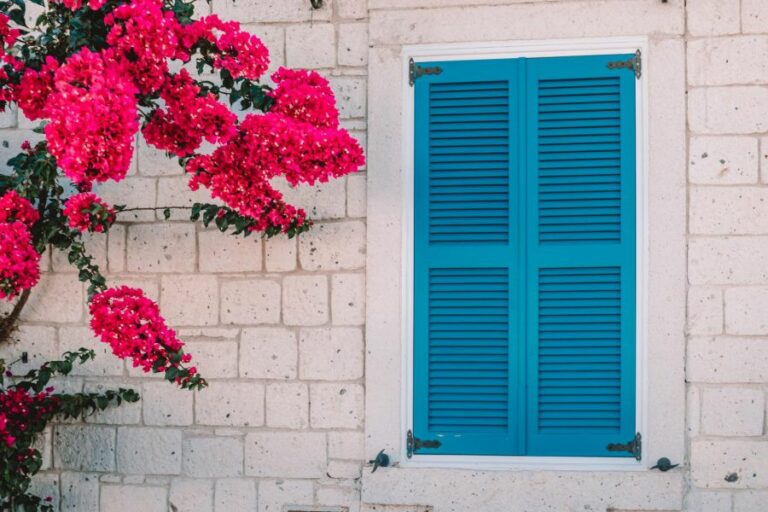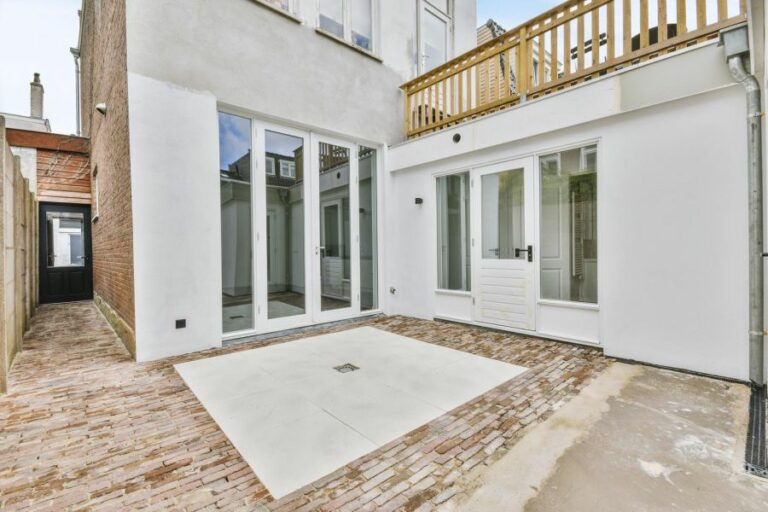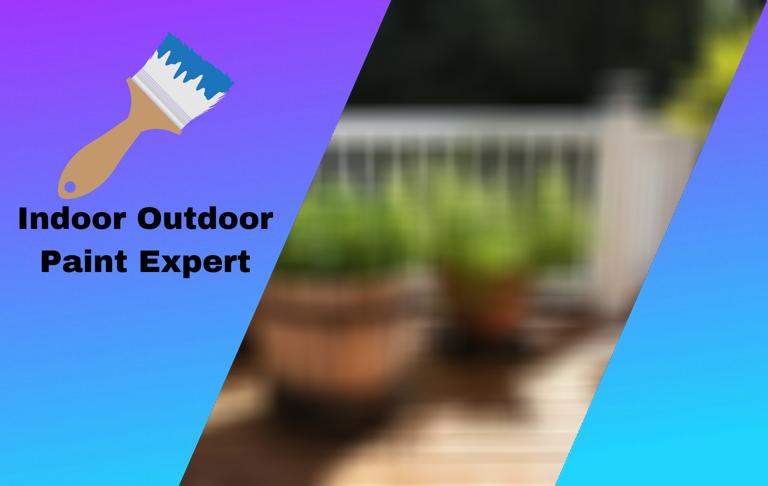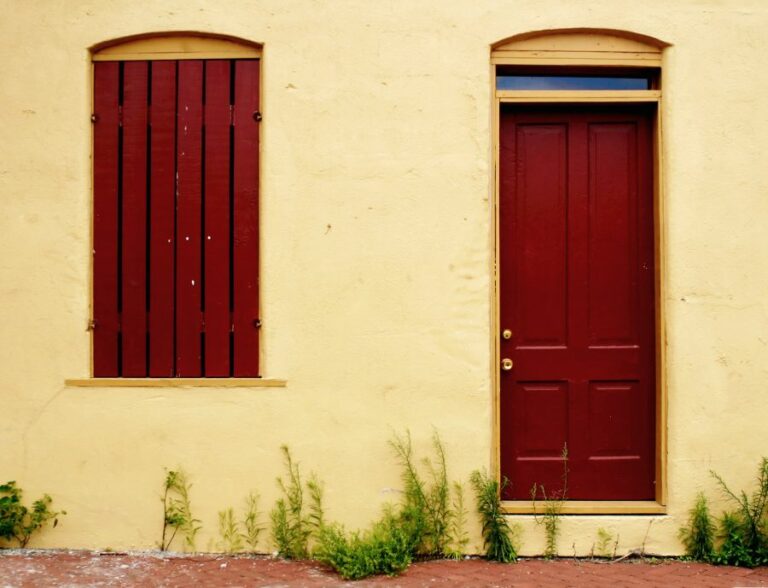Outdoor Glow In The Dark Paint For Concrete, What Pros Say
Illuminate your outdoor space like never before with glow-in-the-dark paint for concrete! Discover the magic of transforming ordinary concrete surfaces into radiant masterpieces that’ll turn heads and create a unique ambiance. Whether you want to enhance your garden, patio, or driveway, this guide will provide all the information you need for a successful project.
Outdoor glow in the dark paint for concrete:
Outdoor glow-in-the-dark paint for concrete surfaces offers enchanting illumination to gardens, patios, and driveways while enhancing safety. Composed of photoluminescent materials, it releases stored energy from light exposure, creating a visible glow. Available in water-based and solvent-based forms, the best paint type depends on factors like color, brightness, finish, durability, and ease of application. For successful results, ensure a clean, primed surface, apply multiple thin coats, use a topcoat for protection, and provide regular light exposure to recharge the pigment.

Discover the magic of illuminating your outdoor spaces with glow in the dark paint for concrete. Learn about the types, application process, durability, and safety as you explore ways to transform your patio or garden into a radiant oasis.
Contents
- 1 Glow in the Dark Exterior Paint for Concrete Surfaces
- 2 Is Glow in the Dark Paint Effective on Concrete Surfaces?
- 3 What is the Durability and Lifespan of Outdoor Glow in the Dark Paint?
- 4 Is the Glow-in-the-Dark Feature Effective in Outdoor Environments?
- 5 What is the process for painting outdoor rocks using glow in the dark paint?
- 6 What is the Most Suitable Type of Paint for an Exterior Concrete Foundation?
Glow in the Dark Exterior Paint for Concrete Surfaces
Imagine how magical your garden, patio, or driveway could look in the evening with a soft, enchanting glow. Using outdoor glow in the dark paint for concrete surfaces is an excellent way to achieve this effect.
Not only does it make your property look captivating, but it also enhances safety by subtly illuminating walking paths and other areas.
• Understanding Glow in the Dark Paint
Glow in the dark paint, also known as photoluminescent paint, absorbs and stores energy from natural or artificial light sources. Once the light source is removed or the surrounding area turns dark, the paint releases the stored energy in the form of a visible glow.
This phenomenon is called phosphorescence, which occurs when certain materials, such as strontium aluminate or zinc sulfide, are included in the paint.
It’s essential to understand that outdoor glow in the dark paint needs exposure to light regularly to function effectively. The luminance and duration of the glow depend on factors such as the type of paint used, intensity and duration of light exposure, and thickness of the paint layer.
• Types of Outdoor Glow in the Dark Paint for Concrete
When it comes to outdoor glow in the dark paint, there are mainly two categories to choose fromwater-based and solvent-based paint. Here is a brief overview of both:
– Water-Based Paint
Water-based glow in the dark paint is eco-friendly and easy to work with. It has lower amounts of volatile organic compounds (VOCs), making it a safer option for the environment and your health. Moreover, it dries quickly and can be easily cleaned up with water.
Despite its benefits, water-based paint can be less durable in terms of wear and tear when comparing it to solvent-based paint. It may require more frequent reapplication or touch-ups if exposed to heavy foot traffic or harsh weather conditions.
– Solvent-Based Paint
Solvent-based outdoor glow in the dark paint for concrete is known for its durability and long-lasting glow. It remains stable and resistant to fading, peeling, or chipping, making it suitable for high-traffic areas and extreme weather conditions.
However, solvent-based paint contains a higher amount of VOCs, which could be harmful to the environment and your health. It also takes longer to dry and clean up.
• How to Choose the Best Outdoor Glow in the Dark Paint for Your Concrete Surface
When selecting outdoor glow in the dark paint for concrete surfaces, consider the following factors:
- Color and brightness: Glow in the dark paints come in various colors and brightness levels. Lighter colors like green and aqua tend to glow the brightest, while darker colors like blue or violet are typically less bright but last longer. Consider the desired look and emphasis on brightness or longevity when choosing a paint color.
- Finish: Some glow in the dark paints leave a glossy finish, while others provide a matte or textured finish. Choose a paint that suits your preference and complements the existing aesthetics of your outdoor space.
- Durability: Consider the longevity and durability of the paint, especially if the surface will be exposed to harsh weather conditions or heavy foot traffic. As mentioned earlier, solvent-based paints tend to be more durable than water-based variants.
- Ease of application: Determine the amount of labor and time you’re willing to invest in applying the paint. While water-based paints are usually easier and quicker to apply, they may require more coats to achieve optimal luminance.
• Tips for Applying Outdoor Glow in the Dark Paint on Concrete Surfaces
Here are some recommendations to ensure the successful application of outdoor glow in the dark paint on your concrete surface:
- Clean the surface: Thoroughly clean the concrete surface and remove any dirt, debris, or loose particles. Use a pressure washer or a stiff-bristled brush with water and detergent, and allow the surface to dry completely before applying the paint.
- Prime the surface: Apply a suitable primer or sealer to the concrete surface to ensure better adhesion of the paint. This step is especially crucial if the surface is porous or has never been painted before.
- Apply multiple thin coats: For optimal glow effect and durability, apply multiple thin layers of glow in the dark paint rather than a single thick coat. Allow each coat to dry as per the manufacturer’s instructions before applying the next layer.
- Topcoat: To protect the paint and ensure its longevity, consider applying a clear topcoat, such as a sealer or varnish. This step is especially important in high-traffic areas or surfaces exposed to extreme weather conditions.
- Regular light exposure: Ensure that your painted concrete surface receives adequate light exposure regularly. This will help recharge the photoluminescent pigments and maintain the desired glow effect.
In conclusion, outdoor glow in the dark paint for concrete surfaces is an outstanding way to add both practicality and enchantment to your property. Whether you wish to accentuate the beauty of your garden or illuminate walking paths, this paint can achieve the desired results.
Is Glow in the Dark Paint Effective on Concrete Surfaces?
One of the most frequently asked questions in the world of painting and decorating is whether glow in the dark paint works on concrete surfaces.
This question is particularly relevant for those looking to add an element of fun, safety, or visual excitement to their concrete floors, walls, and other surfaces.
To answer this question, I will discuss the properties of glow in the dark paint, its compatibility with concrete, and how to properly apply it for the best results.
• What is Glow in the Dark Paint?
Glow in the dark paint, also known as phosphorescent paint or photoluminescent paint, contains phosphorescent pigments that absorb light and store it. The absorbed light is slowly released when exposed to darkness, creating a glowing effect.
The glow’s duration and intensity depend on the paint’s quality, the amount of pigment present, and the amount of light absorbed.
• Can You Use Glow in the Dark Paint on Concrete?
The short answer to this question is yes, glow in the dark paint can be used on concrete surfaces. However, a few important factors must be considered before you start painting. Firstly, you need to select the right type of glow in the dark paint for concrete surfaces.
Some lower quality paints may not adhere as well, resulting in a weaker glow or chipping and peeling after a short period of time. Make sure to choose a high-quality, durable paint specifically designed for use on concrete to ensure the best results.
In addition, it’s important to note that the glow effect will be less prominent on porous surfaces like concrete. The uneven texture of concrete, combined with its ability to absorb moisture and air, can reduce the effectiveness of the glow pigments, leading to a less vibrant glow.
However, this can be mitigated by properly preparing the concrete surface and using a suitable primer.
• Preparation is Key
Before applying glow in the dark paint to any concrete surface, you must properly prepare the surface to ensure the best adhesion and the most vibrant glow. Follow these steps to prepare your concrete surface:
- Clean the Surface: Clean the concrete thoroughly, removing any dirt, grease, or other contaminants. You can use a pressure washer or a strong detergent solution to do this. If the concrete is indoors or you don’t have access to a pressure washer, you can use a scrub brush and a bucket of soapy water. After cleaning, allow the surface to dry completely.
- Repair Any Damage: Examine the concrete for any cracks, chips, or other damage. Repair any issues with suitable patching materials or concrete filler. Once repairs have been made, allow them to dry completely before continuing.
- Smooth the Surface: If the concrete surface is uneven, use a concrete grinder or a high-grit sanding pad. This will help create a more even surface for the paint to adhere to, leading to a more vibrant and long-lasting glow.
- Apply a Primer: Before applying glow in the dark paint, you must apply a primer specifically designed for concrete surfaces. This will create a strong bond between the paint and the concrete, ensuring the best results. Follow the instructions on the primer packaging for the correct application technique and drying times.
• Applying Glow in the Dark Paint to Concrete
Once your concrete surface is properly prepared and primed, it’s time to apply the glow in the dark paint. Follow these steps for the best results:
- Choose the Right Paint: As mentioned earlier, it’s essential to choose a high-quality glow in the dark paint specifically designed for use on concrete surfaces. Look for paints that offer long-lasting glow and strong adhesion.
- Stir the Paint Thoroughly: The glow pigments can often settle at the bottom of the paint container, so make sure to stir the paint well to distribute the pigments throughout the mixture evenly.
- Apply the Paint Evenly: Use a paintbrush, roller, or airless sprayer to apply the glow in the dark paint to the concrete surface. Be sure to apply the paint evenly, as any uneven spots will lead to an uneven glow. If needed, use multiple coats to achieve your desired level of glow intensity, allowing each coat to dry completely before proceeding.
As a general recommendation, it’s best to apply the paint in a well-lit area, as this allows the paint to absorb a sufficient amount of light during the drying process, which will result in a stronger and longer-lasting glow.
Always follow the manufacturer’s guidelines and recommended drying times for optimal results.
• Glow in the Dark Paint Maintenance
To maintain the glow intensity, periodically clean the concrete surface to remove dust, dirt, and other debris that will hinder light absorption. Additionally, reapply the glow in the dark paint as needed to maintain a strong and vibrant glow effect.
• In Conclusion
Glow in the dark paint can indeed be used on concrete surfaces, provided that the appropriate steps are taken to ensure proper preparation, painting, and maintenance.
With the right technique, materials, and attention to detail, you can create an impressive, long-lasting glow effect that adds a unique touch to your concrete surfaces.
What is the Durability and Lifespan of Outdoor Glow in the Dark Paint?
Glow in the dark paint, also known as photoluminescent paint, is an exciting addition to any outdoor space. It can be applied to a wide range of surfaces, including concrete, wood, and metal, and is available in various colors.
But one of the biggest questions on everyone’s mind is, “How long does outdoor glow in the dark paint last?”.
• Factors Affecting the Longevity of Outdoor Glow in the Dark Paint
There are several factors that can impact the lifespan of glow in the dark paint when applied outdoors. These include:
– Quality of Paint
Not all glow in the dark paints are created equal. The quality of the paint you choose will directly impact its longevity. High-quality paints typically contain higher concentrations of photoluminescent pigments and are more resistant to fading and wear.
– Surface Preparation
Proper surface preparation is key to ensuring that your glow in the dark paint adheres well and lasts as long as possible. Surfaces should be clean, dry, and free from dirt, dust, and grease. If the surface is porous, it may need to be sealed with a primer before applying the glow in the dark paint.
– Application Techniques
The method used to apply glowing paint can also affect its longevity. Thicker, more even coats of paint will generally last longer than thinner, patchy applications.
Following the manufacturer’s application directions and allowing the proper drying time between coats can help ensure the longest life for outdoor glow in the dark paint.
– Exposure to Sunlight
Glow in the dark paint works by absorbing and storing sunlight during the day, and then releasing that energy as a glow when it gets dark. The more sunlight the paint receives, the brighter and longer it will glow.
However, extended exposure to direct sunlight can also cause the paint to fade and lose its glow over time.
• Expected Lifespan of Outdoor Glow in the Dark Paint
The expected lifespan of outdoor glow-in-the-dark paint can vary greatly depending on the factors mentioned above. However, most high-quality paints should last between 3 and 10 years when applied properly in outdoor conditions.
Here is a guide to the lifespan of various types of glow-in-the-dark paint for outdoor use:
– Acrylic Glow in the Dark Paint
Acrylic-based glow in the dark paint is one of the most popular options for outdoor use due to its durability and resistance to water, heat, and acids. When applied properly, acrylic glow in the dark paint can last around 5-7 years.
– Epoxy-Based Glow in the Dark Paint
Epoxy-based paint is another excellent option for outdoor use. It is highly durable, resistant to chemicals and weather, and can be used on a wide range of surfaces. When properly applied, epoxy-based glow in the dark paint can last up to 10 years.
– Oil-Based Glow in the Dark Paint
Oil-based paint is a durable and long-lasting option for outdoor use, but it may not be as compatible with certain surfaces, such as concrete or wood. When applied properly, oil-based glow in the dark paint can last up to 3-5 years.
• Tips for Maximizing the Lifespan of Outdoor Glow in the Dark Paint
To ensure your outdoor glow in the dark paint lasts as long as possible, follow these tips:
- Always choose high-quality paint products with a high concentration of photoluminescent pigments.
- Properly prepare and prime the surface before applying the glow in the dark paint.
- Apply the paint in even, thick coats, following the manufacturer’s application and drying instructions.
- If the paint is exposed to direct sunlight for extended periods, consider applying a UV-resistant clear topcoat to protect the paint from fading.
- Periodically clean the painted surface to remove dirt and debris that may block sunlight and reduce the paint’s ability to glow.
In conclusion, the lifespan of outdoor glow in the dark paint can vary based on several factors, including the quality of paint, surface preparation, and exposure to sunlight. With proper application and care, high-quality glow in the dark paint should last anywhere from 3-10 years.
By following the tips and recommendations in this article, you can ensure that your outdoor glowing paint stays vibrant and effective for as long as possible.
Type of paint | Average lifespan |
|---|---|
High-quality glow in the dark paint | Up to 10 years |
Medium-quality glow in the dark paint | 3-5 years |
Low-quality glow in the dark paint | 1-2 years |
Is the Glow-in-the-Dark Feature Effective in Outdoor Environments?
Glow in the dark products have become increasingly popular, especially as decorations and toys. These products typically consist of a phosphorescent material that absorbs light energy and emits it as a visible glow. But how well does this phenomenon work when taken outside?
• Factors Affecting Glow Effectiveness Outdoors
Several factors can influence how well glow in the dark products perform and provide their desired effects in outdoor settings.
– Light Exposure
For a glow in the dark item to function, it needs to be exposed to a source of light. The quality and duration of the light exposure can greatly affect the intensity and longevity of the glow effect.
When outdoors, the main light source is the sun, which provides ample light to charge phosphorescent materials. However, the performance of these materials may diminish on cloudy days or in shaded areas where sunlight is limited.
– Material Quality
The type and quality of phosphorescent materials used in glow in the dark products can also impact their performance outdoors. Higher-quality materials will generally result in a longer-lasting and brighter glow.
Cheaper alternatives may be less effective when used outside due to their lower light absorption and emission capabilities.
– Temperature
Outdoor temperatures can influence the performance of glow in the dark products. Cold temperatures can sometimes cause phosphorescent materials to become less effective, while warmer temperatures may improve their performance.
– Ambient Light
The amount of ambient light in the outdoor environment can play a significant role in the visibility of the glow effect. In areas with high levels of ambient light, such as urban environments, it can be more difficult to see the glow from phosphorescent materials.
Conversely, darker settings, such as rural or wooded areas, may enhance the visibility of the glow.
• How to Maximize Glow in the Dark Performance Outdoors
To ensure that your glow in the dark items function at their best outdoors, consider the following tips:
– Proper Light Sources
Before taking it outside, expose the glow in the dark product to a bright light source. Sunlight works well, but other light sources, such as LED or black lights, can also be effective. The longer and more intense the exposure, the better the glow effect when taken outdoors.
– Use High-Quality Materials
When purchasing glow in the dark products, opt for those made from high-quality phosphorescent materials. These will generally provide a brighter, longer-lasting glow, making them more effective outdoors.
– Temperature Considerations
Be aware of the effects of temperature on glow performance. If the temperature is cold, consider warming the glow in the dark product before exposing it to light, as this may improve its performance.
– Choose the Right Environment
For maximum visibility, choose outdoor environments with low ambient light. The darker the surrounding environment, the brighter and more visible the glow will be.
• Outdoor Applications for Glow in the Dark Products
Glow in the dark items can be useful and fun additions to outdoor settings. Some potential applications include:
– Safety Markers
Glow in the dark products, such as tape, paint, or plastic markers, can be used to enhance safety in outdoor environments. They can be applied to stairs, pathways, or other potentially hazardous areas to increase visibility and reduce the risk of accidents during low-light conditions.
– Outdoor Decorations
Glow in the dark decorations can add a unique and visually appealing element to outdoor parties, events, or garden displays. Items like glowing planters, solar-powered garden stakes, or hanging ornaments can create a magical atmosphere that entices and delights guests.
– Camping and Hiking
Glow in the dark can be useful during camping or hiking. Tent stakes, rope, or other equipment made from phosphorescent materials can make locating items in the dark much easier and reduce the need for constant use of flashlights or lanterns.
– Sports and Recreation
Many outdoor sports and recreational activities can be enhanced with glow in the dark products. Incorporating these items from glowing frisbees and footballs to nighttime games like capture the flag can make outdoor play more fun and engaging.
• In Conclusion
Glow in the dark products can indeed work effectively outdoors, as long as the factors affecting their performance are carefully considered.
By ensuring proper light exposure, using high-quality materials, accounting for temperature, and selecting the right environment, you can optimize the visibility and longevity of their glow effect in various outdoor applications.
With these considerations in mind, glow in the dark materials can become a valuable addition to your outdoor equipment, decorations, and activities.
What is the process for painting outdoor rocks using glow in the dark paint?
Creating a star-studded garden, a glow-in-the-dark stepping stone pathway, or simply adding a touch of magic to your backyard can be easily achieved with glow-in-the-dark paint.
• Choose the Right Glow in the Dark Paint
Before you start, choosing the right glow-in-the-dark paint for your project is essential. There are several types available, but the best for outdoor use will be water-resistant, weather-proof, and UV-resistant to ensure the longevity of the paint.
These features will also prevent the colors from fading over time. Some recommended glow-in-the-dark paints for outdoor projects include:
- Europium UltraGlow Paint
- Rust-Oleum Glow-in-the-Dark Paint
- Aurora Bright Green Glow-in-the-Dark Paint
• Prepare a Workspace and Gather Supplies
To ensure a seamless painting process, find a suitable workspace and gather all the necessary supplies before starting. Here is a list of items you will need:
- Outdoor Rocks
- Glow-in-the-Dark Paint
- Paintbrushes
- A Drop Cloth or an Old Sheet
- A Cup of Water
- Paper Towels
- Clear Sealer or Varnish
- Weather-resistant gloves
• Clean and Prep Your Rocks
The rocks you choose to paint should be dry, clean, and free of debris. It is important to clean the rocks with a brush and water to remove any dirt or loose material. Allow the rocks to dry completely before painting.
• Apply the Glow-in-the-Dark Paint
Once the rocks are clean and dry, it’s time to apply the paint.
- Lay the drop cloth or old sheet on your workspace to protect the surface from paint.
- Shake the glow-in-the-dark paint well to ensure proper consistency.
- Using the paintbrush, apply the paint evenly on the rock’s surface. A thin layer works best when applying glow-in-the-dark paint, allowing for even distribution of the pigments.
- Allow each layer of paint to dry before applying additional coats. The number of coats required will depend on the desired glow level and the paint brand being used. It is recommended to paint at least 3-4 coats for maximum effect.
- Clean your brushes with water and paper towels between coats and when you are finished painting.
• Seal the Painted Rocks
To further protect the painted rocks and ensure the longevity of the glow-in-the-dark paint, it is recommended to apply a clear sealer or varnish. Choose a weather-resistant, UV-resistant sealer or varnish to guarantee the best results.
Apply the sealer or varnish using a clean brush, allowing the paint to dry between coats. Applying at least two coats of sealer or varnish for complete protection is recommended.
• Let the Rocks Charge and Glow
Glow-in-the-dark paints absorb sunlight or artificial light and then emit the stored energy as light when it gets dark. To achieve the best glow, place your painted rocks in sunlight for at least six hours to allow them to charge optimally.
If sunlight is not available, a UV lamp can also be used for charging.
• Arranging Your Painted Rocks Outdoors
Now that your glowing rocks are ready think about arranging them in your outdoor space. There are endless ways to utilize your glowing rocks, such as:
- Creating a glowing stepping stone pathway
- Lining a garden bed with glowing rocks
- Sprinkling the glowing rocks throughout your lawn for a magical touch
- Adding glowing rocks to a water feature or pond
- Creating patterns or symbols in your rock arrangements
The possibilities are endless. Just remember to place your painted rocks in areas where they will be exposed to sunlight, allowing them to charge properly and emit a beautiful glow come nightfall.
In conclusion, painting outdoor rocks with glow-in-the-dark paint is an enjoyable and creative project that adds a touch of enchantment to your garden or backyard. By following the steps above, you can easily create your own glowing masterpiece to enjoy for years to come.
| How to paint outdoor rocks with glow in the dark paint | |
|---|---|
| Step 1 | Clean the rocks thoroughly to remove any dirt or debris that might affect the paint adhesion. |
| Step 2 | Apply a base coat of outdoor paint or sealant to help the glow in the dark paint adhere well and last longer. |
| Step 3 | Select a high-quality glow in the dark paint designed for outdoor use. |
| Step 4 | Using a brush, apply a generous layer of the glow in the dark paint to the rocks’ surface, ensuring even coverage. |
| Step 5 | Allow the paint to dry according to the manufacturer’s instructions. It may take several hours or even a few days, depending on the humidity and temperature. |
| Step 6 | If you want a stronger glow effect, apply multiple layers of the glow in the dark paint, ensuring that each layer is dry before applying the next. |
| Step 7 | After the paint is fully dry, seal the rocks with a clear outdoor sealant to protect the paint from weather and fading. |
| Step 8 | Place the painted rocks in an outdoor area where they can receive adequate sunlight or exposure to other light sources to charge the glow in the dark paint. |
What is the Most Suitable Type of Paint for an Exterior Concrete Foundation?
When it comes to painting the outside concrete foundation of a building, selecting the appropriate type of paint is crucial. There are several factors to consider, such as the paint’s durability, resistance to weather conditions, and the overall aesthetics it provides.
• Acrylic Latex Paint
Acrylic latex paint is a popular choice for exterior concrete foundations due to its exceptional durability and color retention. This paint adheres to concrete surfaces easily while providing excellent protection against moisture and mildew.
– Advantages of Acrylic Latex Paint
- It dries quickly, allowing you to apply multiple coats in a short period.
- The paint is easy to clean with soap and water, making maintenance hassle-free.
- It offers exceptional resistance against peeling, chipping, and blistering.
- Acrylic latex paint is available in various finishes, including flat, satin, and gloss.
– Recommendations for Acrylic Latex Paint
- Before applying the paint, ensure that the surface is clean and free from dirt, debris, or grease. Pressure wash the foundation if necessary.
- If the concrete foundation is new, let it cure for a minimum of 30 days before painting.
- Apply a concrete primer before painting to improve adhesion and coverage. Alternatively, you can use an acrylic latex paint with a built-in primer.
- Apply at least two coats of paint for optimal color and protection.
• Elastomeric Paint
Elastomeric paint is a high-performance coating that has exceptional elasticity and weather resistance. It is specifically designed for concrete and masonry surfaces, making it an excellent option for outdoor concrete foundations.
– Advantages of Elastomeric Paint
- This thick, flexible paint protects against moisture, wind, and temperature fluctuations.
- It prevents water penetration while allowing the surface to breathe, which helps reduce the chances of mold and mildew growth.
- Elastomeric paint can help bridge minor cracks and irregularities on the foundation’s surface.
- It offers excellent adhesion, color retention, and UV resistance.
– Recommendations for Elastomeric Paint
- Ensure the surface is clean, free of contaminants, and dry before painting.
- A high-quality concrete primer is recommended to enhance adhesion and coverage.
- Apply two or more coats of elastomeric paint, allowing each coat to dry completely before applying the next.
- Use a high-quality synthetic brush, roller, or airless sprayer for the best results.
• Masonry Paint
Masonry paint, also known as masonry coating or mineral paint, is specifically formulated for use on concrete, brick, and other porous surfaces. This type of paint is highly breathable, allowing moisture to evaporate while providing excellent protection against the elements.
– Advantages of Masonry Paint
- It provides excellent resistance to weathering, cracking, and peeling.
- Masonry paint is alkaline-resistant and can provide a long-lasting finish.
- It allows the concrete surface to breathe, preventing moisture build-up and mold growth.
- Most masonry paints contain fungicides and algicides to protect against algae and mildew.
– Recommendations for Masonry Paint
- Clean the surface and repair any cracks or damage before painting.
- When painting new concrete, wait for at least four weeks for the concrete to cure.
- Apply a suitable concrete primer before painting for better adhesion and coverage.
- Apply two coats of masonry paint, allowing each coat to dry before applying the next.
• Conclusion
In conclusion, the best paint for an outside concrete foundation depends on your specific needs and preferences. Acrylic latex paint is an excellent choice for its durability and ease of application.
Elastomeric paint provides superior moisture and weather resistance, while masonry paint is designed explicitly for concrete surfaces and breathability.
Regardless of which paint you choose, proper surface preparation, using a high-quality primer, and applying the recommended number of coats will help ensure a long-lasting and visually appealing result.
Don’t forget to follow the manufacturer’s instructions and recommendations to maximize the paint’s performance and achieve the best possible outcome for your project.







